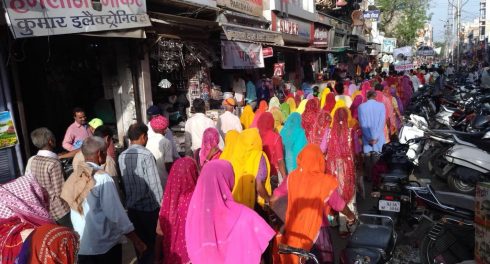By Alden LeClair
During my time as a Fellow at TAI, I have thought often about the challenges of TAP work in fragile and conflict-affected states (FCS). Over the last few years, donor resources have become increasingly focused on FCS. Among TAI members, there are grants in a range of FCS or countries with fragile sub-regions, including Nigeria, Colombia, Mali, Myanmar, and Pakistan. One area which warrants particular attention is budget transparency. The World Bank identifies “transparency in budget expenditures” as an immediate recommended action post-conflict to restore confidence in the government and enable security sector reform. Yet too often, budget transparency projects in FCS are top-down and fail to deliver results to ordinary citizens. Further, budget transparency requires transparency of process, allocations, and transfers, and achieving even one step of the process in FCS can be challenging, let alone all three. At the same time, many practitioners question whether participatory budgeting can even achieve results in FCS where civil society may be weak or state capacity may be low or non-existent.
There is an imperative then to review the evidence and try to understand what can be achieved in such environments. The evidence to date suggests the nature of budget transparency programs will have to be fundamentally different in FCS and fragile subregions than elsewhere. As such, funders will need to rethink standard approaches to these programs in these environments if they want to see meaningful results. In order to explore this issue further, I spoke with practitioners and conducted secondary research on best practices for CSO engagement on budget transparency in FCS and fragile subregions. From this, the following key messages emerged as recommendations to donors and other TAP partners.
Donors should take an outside the box approach in determining who is part of civil society and what engagement looks like. In FCS, there needs to be a strong focus on inclusivity and bringing in unusual suspects to foster trust and rebuild social contracts. This might include faith-based actors (e.g., Catholic Church leaders in DRC) and traditional/customary institutions (e.g., local chiefs in Sierra Leone) who have strong local legitimacy in environments where governments or donors do not. Similarly, certain modes of program delivery in FCS can be unintentionally exclusionary, and donors will need to be wary of this in deciding which projects to fund. This might mean a shift away from high-tech solutions toward a more low-tech approach (e.g., posting printed budgets on bulletin boards, as was done with legislative bill tracking in Liberia) in settings with low literacy and/or internet penetration.
Conflict analysis and adaptive learning should be part of program development. Donors need to consider how threats of insecurity or poor citizen-state relations can impact programming and tailor their funding appropriately. For example, public budget hearings may not be safe for citizens in countries where the state violently suppresses opposition. A strong and dynamic conflict analysis can underpin these programs by outlining the political economy in which these programs will operate. TAI Member DFID has integrated this well into civil society projects in northeastern Nigeria, where periodic conflict analyses and adaption are part of the project framework. Also in Nigeria, the World Bank, as part of its $750 million state fiscal transparency program, engaged in additional social assessments focused on conflict for the North East and Niger Delta regions.
Rather than seeing fragility and conflict as barriers to budget transparency work, donors should see them as opportunities to help rebuild budget systems in ways that embed transparency and accountability for aligning spending with citizens needs. Donors often miss opportunities to contribute to budget transparency due to insecurity. While these environments obviously pose numerous challenges for organizations and their staff in terms of security, reform is possible. A World Bank study which assessed public financial management reforms in eight fragile countries found that half of them (Afghanistan, Kosovo, Sierra Leone, and West Bank and Gaza) showed “substantial” progress. And these substantial reforms led to improved service delivery; e.g., from 2000 to 2010 Afghanistan’s primary school enrollment rate increased from 19% to 97%, and Sierra Leone’s measles immunization rate more than doubled from 37% to 82%. This is particularly true where a strong local civil society who can more effectively operate in unstable regions can be a partner. An example is Integrity Watch Afghanistan, who work through local shura councils to develop community budget monitoring mechanisms, even in Taliban-affected areas.
Despite the challenges to donors and CSOs, there is potential for progress on budget transparency as part of broader fiscal accountability in FCS. For donor programs to be successful, however, the FCS governments themselves need to prioritize budget transparency and see its value to repair relationships with their citizens. There are a number of incentives for FCS governments to prioritize budget transparency including preventing recurrence of conflict, attracting more aid or foreign investment, and building a more cohesive state. It is incumbent upon donors to work not just with partner country governments, but also with civil society around those incentives to generate meaningful policy change. More broadly, as donors increasingly find their comparative advantage is to scale up operations in these difficult environments, they will need to rethink their standard approaches to budget transparency programs in favor of ones which are more flexible and adaptive.
Thanks to Claire Schouten and Austin Ndiokwelu of International Budget Partnership for providing insights.


